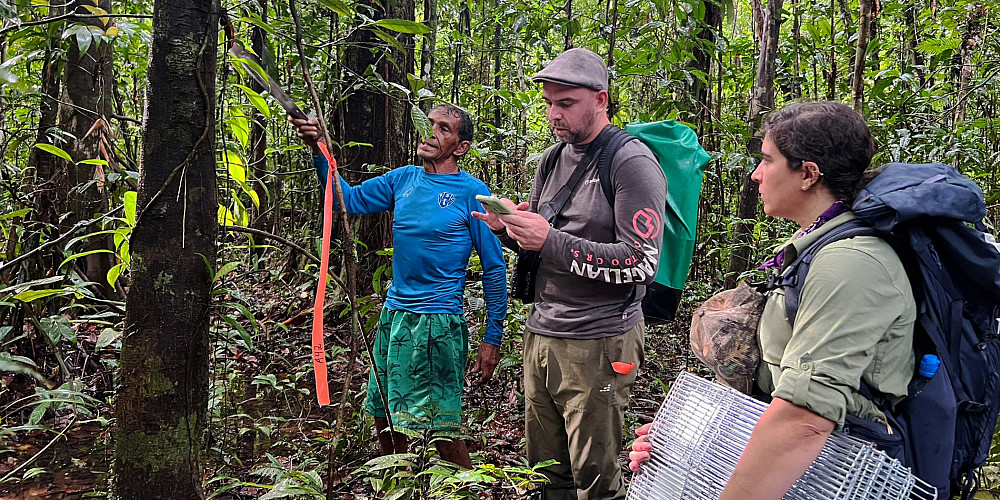Biology Prof & Student Take Research Trip to the Amazon
March 10, 2025

Dr. Edson Abreu of the Angelo State University biology faculty recently took part in a scientific expedition to Marajó Island in Brazil, the largest river island on the planet. He was accompanied by ASU senior, Rachel Longoria.
Marajó Island is the largest fluvial island on Earth, about the size of Switzerland, spanning over 15,000 square miles. It is located in the Brazilian State of Pará at the mouth of the Amazon River and is well-known for its rich archeological history as it was once home to an advanced pre-Columbian society, the Marajoara culture. Because of this, the island has been the focus of scientific exploration since the 19th century. However, little attention has been placed on Marajó’s diverse wildlife.

Longoria, a natural resource management major from Houston, joined Abreu and the Cal Poly scientists on a research team that also included faculty and students from three Brazilian universities. They collected and documented numerous animal species near the town of Anajás in the center of Marajó Island, including 12 species of small mammals, six marsupials and six rodents.


“Getting to know these extraordinary people and learning from their inherited knowledge of the forest is something that makes me want to return to Amazonia again and again,” Abreu said.
“Throughout this expedition,” Longoria said, “my energies were equally divided between fieldwork and being constantly awestruck by the whole experience. Picking up some Portuguese, trying out new food, and hacking down saplings during an Amazonian downpour were half the fun. While in the deep night tracking down mammals in a small canoe, I looked up to see the sky dappled with foreign stars, a reminder to me that Mother Nature need not convince us of her mystery.”
This was Abreu’s second research trip to the Amazon in less than a year. In 2024, he and ASU biology student Aramide Oladiran spent a month in Brazil as part of a 14-person research team, seeking out rare and new mammal species in remote sites along the Purus River in the Amazon Forest. During that trip, the researchers collected and documented over 300 specimens representing about 65 different species.
